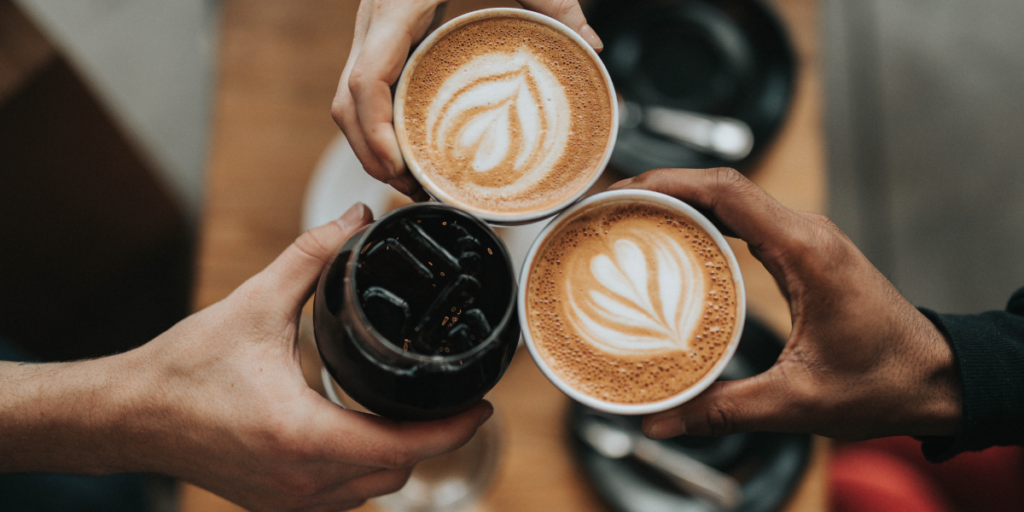Coffee, with its rich history and diverse cultural significance, serves as a global connector, bringing people together across continents and generations. Beyond its role as a morning pick-me-up, coffee offers a sensory journey that allows us to explore the world through taste.
In this article, we delve into the art of coffee tasting and how it unveils a tapestry of flavors, aromas, and traditions from different corners of the globe. From the bustling streets of Latin America to the serene highlands of Ethiopia, each cup tells a unique story, inviting us to embark on a voyage of discovery.
Coffee is not just a beverage; it’s a cultural symbol deeply ingrained in the fabric of society. From the bustling cafes of Paris to the traditional coffee ceremonies of Ethiopia, each culture has its own rituals and traditions associated with coffee consumption.
By exploring these cultural nuances, we not only gain insight into the history and heritage of different regions but also develop a greater appreciation for the role coffee plays in shaping communities and identities around the world.
The Art of Coffee Tasting
Coffee tasting, often referred to as cupping, is a nuanced practice that goes beyond the simple act of drinking. It involves a systematic approach to evaluating the sensory attributes of coffee, including aroma, flavor, body, acidity, and aftertaste.
Unlike casual consumption, coffee tasting requires attentiveness and mindfulness to fully appreciate the complexities of each brew. By honing our tasting skills, we can unlock a world of flavors and gain a deeper understanding of coffee’s diverse profiles.
To truly appreciate the art of coffee tasting, one must engage all the senses. Begin by inhaling deeply to capture the aroma of freshly ground beans, taking note of any floral, fruity, or earthy notes. Next, take a small sip, allowing the coffee to coat your palate and awaken your taste buds.
Pay attention to the flavor profile, noting any nuances of sweetness, acidity, or bitterness. Finally, assess the body and texture of the coffee, observing its mouthfeel and lingering aftertaste. Through practice and patience, you’ll develop a discerning palate capable of identifying subtle differences in coffee varieties.

The Cultural Aspect of Coffee Tasting
Coffee is deeply intertwined with the cultural identities of communities around the world. In Ethiopia, coffee ceremonies are a symbol of hospitality and friendship, where guests are welcomed with freshly roasted beans and aromatic incense.
In Italy, the espresso culture is a cornerstone of daily life, with locals gathering at cafes to socialize and savor the rich, intense flavors of their favorite brews. Each culture brings its own rituals and traditions to the coffee table, reflecting the values and customs of its people.
By exploring the cultural aspect of coffee tasting, we gain a deeper appreciation for the stories behind each cup. Whether it’s the complex history of coffee cultivation in Colombia or the intricate art of Japanese pour-over brewing, every culture brings its own unique perspective to the world of coffee. Through shared experiences and traditions, coffee becomes more than just a beverage—it becomes a bridge that connects us to distant lands and unfamiliar customs.
Coffee Varieties and Their Tasting Profiles
The world of coffee is vast and diverse, with a myriad of varieties each offering its own unique flavor profile. Arabica, known for its smoothness and nuanced flavors, dominates the specialty coffee market, while Robusta is prized for its boldness and higher caffeine content.
Additionally, specialty beans from specific regions, such as the fruity notes of Ethiopian Yirgacheffe or the chocolatey richness of Colombian Supremo, showcase the diversity of coffee’s flavor spectrum. Understanding the characteristics of different coffee varieties allows us to better appreciate the nuances of taste and aroma in each cup.
When exploring coffee varieties and their tasting profiles, it’s essential to consider factors such as growing conditions, processing methods, and roast levels. Coffees grown at higher altitudes tend to have a brighter acidity and more complex flavor notes, while those from lower elevations may exhibit deeper, earthier tones.
Similarly, the processing method, whether it’s washed, natural, or honey processed, can significantly impact the final taste of the coffee. By experimenting with different varieties and processing techniques, you’ll discover a world of flavors waiting to be explored.
The Palate Journey: Steps to Enhance Coffee Tasting Experience
Embarking on a coffee tasting journey requires more than just a cup of joe; it demands preparation, patience, and a keen sense of curiosity. To enhance your coffee tasting experience, start by selecting a variety of beans from different regions to sample. Next, set up a tasting station with the necessary equipment, including a grinder, scale, and brewing apparatus.
When tasting, pay attention to the aroma as you inhale deeply, then take small sips to coat your palate and assess the flavor profile. Finally, make note of any distinctive characteristics and compare your observations with others to deepen your understanding of coffee’s complexities.
As you embark on your palate journey, don’t be afraid to experiment with brewing methods and extraction techniques. Each brewing method, whether it’s pour-over, French press, or espresso, can highlight different aspects of the coffee’s flavor profile.
By exploring various brewing methods, you’ll gain a deeper appreciation for the versatility of coffee and how small changes in technique can yield significant differences in taste. Additionally, consider organizing a coffee tasting session with friends or fellow enthusiasts to share your experiences and learn from one another’s insights.
Exploring Coffee Terroir
Similar to wine, coffee exhibits terroir, the unique combination of environmental factors that influence its flavor profile. Factors such as soil composition, climate, altitude, and rainfall all play a role in shaping the taste of coffee beans. For example, coffees grown at higher altitudes tend to have a brighter acidity and more complex flavor notes, while those from lower elevations may exhibit deeper, earthier tones. By exploring different coffee terroirs, we gain insight into the intricate relationship between geography and flavor, further enriching our tasting experience.
To truly appreciate the concept of coffee terroir, consider conducting a side-by-side tasting of coffees from different regions or micro-lots within the same farm. Pay attention to how subtle variations in terroir influence the taste and aroma of the coffee, from the citrusy brightness of a Kenyan coffee to the chocolatey richness of a Guatemalan brew.
Additionally, seek out single-origin coffees that are transparent about their sourcing and production methods, allowing you to trace the coffee’s journey from farm to cup. By exploring coffee terroir, you’ll gain a deeper appreciation for the intricate balance of nature and nurture that goes into every sip.

Coffee Tasting as a Mindful Practice
In today’s fast-paced world, finding moments of mindfulness is essential for maintaining balance and well-being. Coffee tasting offers a unique opportunity to slow down and engage our senses in a meaningful way.
By focusing on the aroma, flavor, and texture of each cup, we cultivate a sense of presence and appreciation for the simple pleasures in life. Incorporating coffee tasting into our daily routine can serve as a form of meditation, allowing us to reconnect with ourselves and the world around us one sip at a time.
As you engage in coffee tasting as a mindful practice, remember to approach each cup with an open mind and a sense of curiosity. Let go of distractions and preconceived notions, allowing yourself to fully immerse in the sensory experience. Notice how the aroma of freshly ground beans fills the air, how the first sip awakens your taste buds, and how the warmth of the cup comforts your soul.
By embracing the present moment and savoring each sensation, you’ll discover a newfound appreciation for the simple act of drinking coffee. So, the next time you brew a cup, take a moment to pause, breathe, and savor the richness of the experience.
Conclusion
In conclusion, coffee tasting is not just about indulging in a delicious beverage; it is a journey of discovery that opens doors to new cultures, flavors, and experiences. By embracing the art of coffee tasting, we not only expand our palates but also deepen our appreciation for the rich tapestry of the world.
Whether savoring a delicate Ethiopian pour-over or enjoying a bold Brazilian espresso, each cup offers a glimpse into the diverse landscapes and traditions that make coffee a truly global phenomenon. So, take a moment to savor your next cup and embark on your own palate journey—it’s a voyage well worth taking.
As you continue your coffee tasting journey, remember to approach each cup with an open mind and a sense of wonder. Each sip is an opportunity to explore the nuances of flavor and aroma, to connect with different cultures and traditions, and to deepen your understanding of the world around you.
Whether you’re a seasoned coffee aficionado or a curious beginner, there is always something new to discover in the world of coffee tasting. So, brew a fresh pot, gather some friends, and embark on an adventure of the senses—you never know what delicious surprises await.
In the age of globalization, coffee serves as a universal language that transcends borders and unites people from all walks of life. From the bustling coffee shops of New York City to the remote highlands of Papua New Guinea, coffee has the power to bring people together, spark conversations, and forge lasting connections.
By embracing the diversity of coffee culture and exploring its myriad flavors, we not only enrich our own lives but also contribute to a more inclusive and interconnected world. So, let’s raise our cups to the journey ahead and toast to the transformative power of coffee tasting.
In the end, it’s not just about the coffee—it’s about the experiences, the memories, and the moments shared with others. Whether you’re sipping a steaming mug on a chilly morning or enjoying a refreshing iced coffee on a hot summer day, take a moment to appreciate the simple joys that coffee brings to our lives. So, here’s to the Palate Journey: may it be filled with discovery, delight, and endless cups of good coffee. Cheers!


